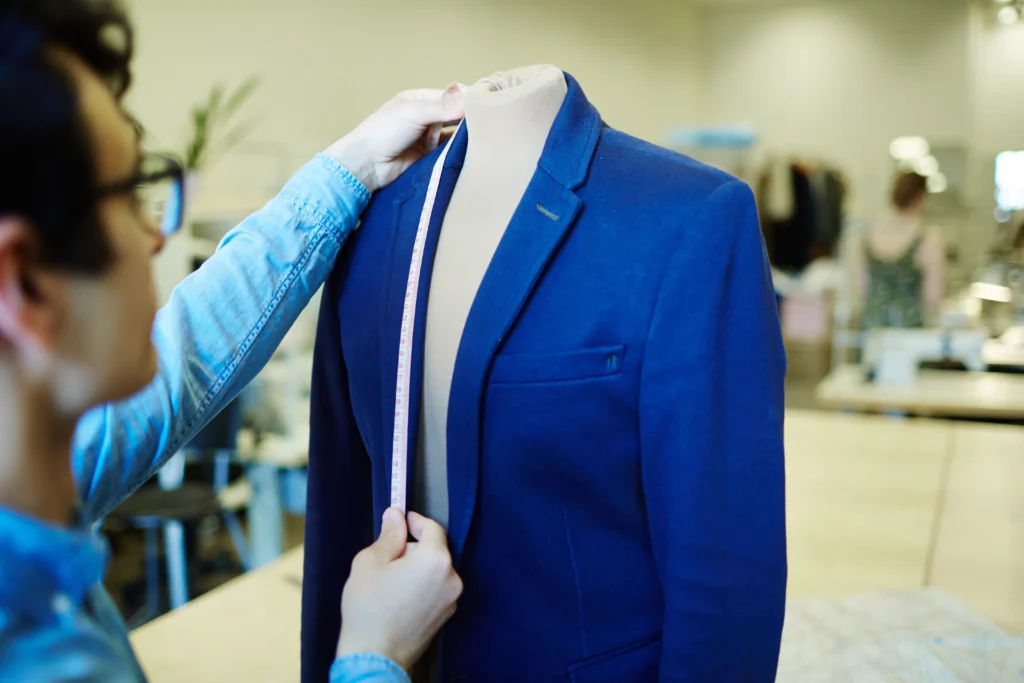7 Steps in Creating a Perfectly Tailored Bespoke Suit
A custom suit is not just an outfit; it is a center of attraction and statement.
While most fashionistas continue to enjoy the great impression associated with these pieces, they are not familiar with the intricate process it takes to come up with their masterpieces.
This article gives a breakdown of the long and intricate process of coming up with a perfectly knit bespoke suit that you so much love.
Consultation and Fabric Selection
The bespoke suit construction journey sets sail with an interpersonal meeting between the wearer and tailor.
The meeting serves the purpose of the tailor familiarizing themselves with the personalized desires and needs of the wearer.

The Art of a Fitting Suit
Based on the intended occasion, personal style, and preference, the fashion needs of one wearer are always different from those of other wearers. The tailor will also embrace this meeting to display to the wearer, the various fabric options so that they can pick one that speaks to their personalized fashion needs. Wool, blends, cashmere, and cotton make up the vast array of options you will be availed with. Lining, buttons, and other details like lapels or pocket styles will also be discussed.
Measuring
The first stopover in the intricate bespoke suit construction journey is measurement taking. Measuring is done in strict adherence to the personalized body qualities and posture of the wearer. The measurements are then recorded in a book, taking into account other garment details like lapels. The measurements form the basis for the creation of a pattern or blueprint for the garment making in the next process step.
Pattern Creation
With close reference to the measurements taken in the previous garment construction process step, the tailor makes a handcrafted sort of sketch of the garment, usually known as a pattern. Also known as an inlay, the pattern displays a rough appearance of the final garment to be made in later stages of the process. The inlay is then transferred onto a fabric and is meticulously cut according to the measurements. During fabric cutting, a little allowance is made to accommodate any adjustments that may arise due to weight gain and loss, over time.
Baste Fitting
The different suit pieces of cut fabric are then taken to different craftsmen, according to their specialization and skillset. Each fabric piece is loosely handstitched with a white thread, a construction step referred to as basting. The result is a rough form (baste) of the final garment, whose purpose is to test its fit in reference to those of the wearer’s body. Loose and tight edges and corners like shoulder width, waist suppression, sleeve, and jacket lengths are noted down for readjustments in the later stages.
Refinement and Adjustments
Baste fitting is followed by refinement and adjustments to come up with a precisely fitting garment. This entails completely taking apart the baste and hand stitching the garment from scratch, only that this time round, the client’s feedback, and the tailor’s observations will be incorporated. Adjustments noted in the previous process stage are made to balance the garment’s proportions and achieve a more precise fit. In the process, the pattern may be tweaked a little to incorporate any needed changes in the later stages. Unlike in the basting stage of the process, here, the garment has already taken shape and by now, you have a clear image of what the ultimate outfit will look like.
Second Fitting
Coming to the second fitting, the garment is awaiting the final stitching to allow for a precise fit. However, before the final stitch, the client is invited for another fitting to ensure it hugs the body perfectly. This fit provides the tailor with an opportunity to fine-tune finer details like lapel roll, drape, and trouser break.
Final Fitting and Completion
Final adjustments signal the completion of hand stitching and readiness for final fitting. The craftsman ensures that everything is precise-from the way the buttons fasten to how the outfit moves with the body. At this process phase, only minor tweaks, if any, are necessary.
Once the final fitting is satisfactory, the wearer can then leave with their garment that is ready to wear, presenting a perfect blend of comfort, style, and timeless elegance. The wearer departs with a garment made entirely for them, with a pattern that can be utilized in future commissions. Alternatively, the piece can be sent to a wearer’s desired address via delivery services. Each process step in the bespoke suit construction is an exercise in precision, artistry, and collaboration between the client and the craftsman, ensuring a one-of-a-kind result.

